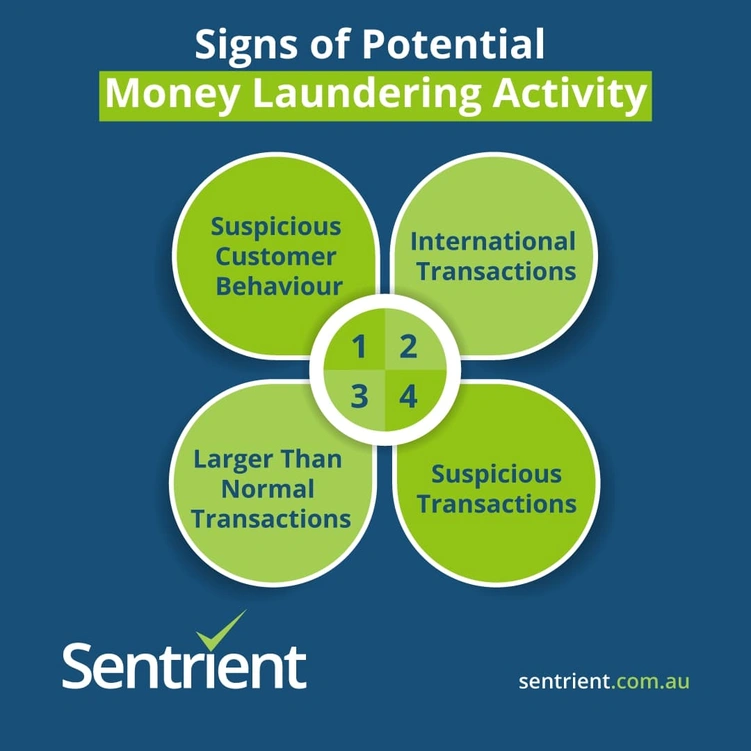There are a range of indicators to help you identify potential money laundering activity, ranging from suspicious customer behaviour, international transactions, larger than normal transactions and suspicious transactions.
The presence of a single indicator may not necessarily raise suspicion but could warrant further monitoring and examination. Multiple indicators are more likely to result in a suspicion being formed.

1. Suspicious customer behaviour
Suspicious customer behaviour that may be an indicator of money laundering include:
- refusing to show identification.
- unusual business account behaviours such as frequent changes of address, phone numbers, etc.
- the unusual desire for anonymity or discretion in their affairs
- unusual interest in internal controls and processes
- use of false identification to conduct transactions.
2. International transactions
International transactions that may be an indicator of money laundering include:
- high-value cash deposits to pay for international funds transfers.
- high-value international funds transfers to/from Australia with no apparent business or other reason
- ordering customers to send international funds transfers to multiple beneficiaries.
- significant volume of international funds transfers conducted in a short period of time.
Recommended reading: Anti-Money Laundering and Counter Terrorism Financing Course
3. Larger than normal transactions
Large transactions that may be an indicator of money laundering include:
- large cash deposits and withdrawals
- new customer attempting large transactions.
- Regular large cash deposits are made into a remitter’s accounts by the same third party, who does not appear to be directly linked to the remittance business.
4. Suspicious transactions
Unusual transactions that may be an indicator of money laundering include:
Cash withdrawals are conducted at various bank branches and/or ATMs on the same day.
- multiple cash deposits at various banks and branches, and multiple customers sending international funds transfers to the same overseas beneficiary.
- structuring of cash deposits and withdrawals to avoid reporting requirements.
- undertaking transactions that appear inconsistent with their profile and/or transaction history.
- use of third parties to carry cash, deposit, or withdraw funds.
Find out how you can access online learning on anti-money laundering and counter-terrorism financing now.
Sentrient provides an online AML and CTF course that enables a Reporting Entity to deliver robust training for its staff that has been legally endorsed and covers legislation for all states and territories in Australia.
For more information, contact us at 1300 040 589 or visit our website at www.sentrient.com.au today.





